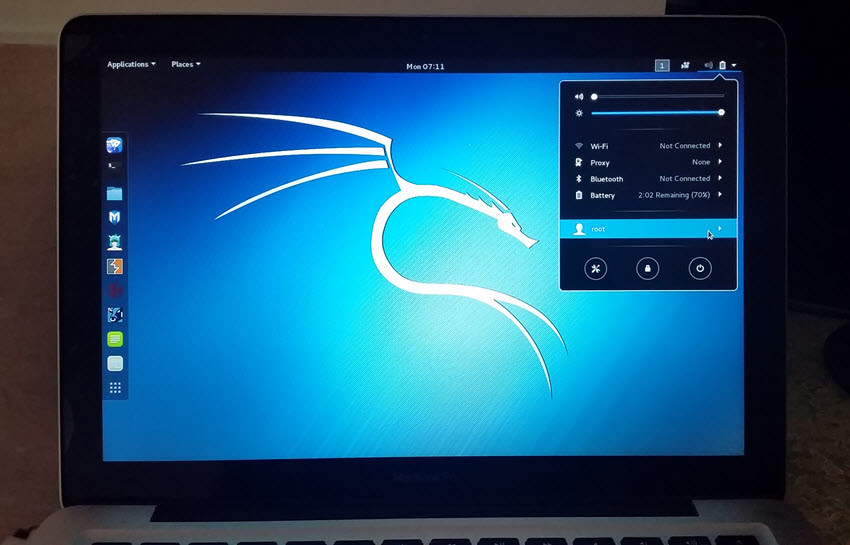

CREATE A KALI LINUX BOOTABLE USB FOR MAC INSTALL
Convert your image (usually an ISO) to an IMG file using the hdiutil convert command: There are three methods to install Kali Linux, on the hard disk (on the single boot or multiboot), on a USB thumb drive to use it as a live system. Launch Terminal and take note of where your Linux disc image is stored in Finder. Assuming you've formatted your drive per the earlier instructions, here's how it works: You might even learn something new, plus you'll feel smart afterwards. While this method requires a little more thought and patience, it's actually pretty straightforward. It's possible using Terminal, your Mac's built-in command line interface. If for some reason you don't want to use Etcher (maybe you're on an incompatible version of macOS), you can accomplish this task using the command line. If it fails, try again-sometimes the system doesn't unmount the volume in time and the process will be unable to complete. Give it a name and choose MS-DOS (FAT) under Format and GUID Partition Map under Scheme. Select your USB device in the menu on the left, then click Erase. Insert your USB drive into your Mac and launch Disk Utility (under Applications > Utilities, or search for it using Spotlight with Cmd + Space). Creating a Bootable Kali USB Drive on macOSOS X (DD) macOSOS X is based on UNIX, so creating a bootable Kali Linux USB drive in an macOSOS X environment is similar to doing it on Linux. Warning: Everything on your drive will be erased when you do this! Kali Linux Live USB Install Procedure The specifics of this procedure will vary depending on whether youre doing it on a Windows, Linux, or macOSOS X system. Others don't have any strict requirements, but formatting to FAT beforehand is a good idea regardless. Generally speaking, anything above 4GB will do the job.

Some Linux variants may require larger volumes, so pay attention to the requirements when downloading.

When you're looking to create a bootable Linux USB drive on a Mac, the first step is to make sure you've got the right USB drive for the job, and that it's formatted correctly to avoid any problems.
CREATE A KALI LINUX BOOTABLE USB FOR MAC FOR MAC
For Mac and Linux users, you use the dd command to accomplish this in our. You can go the freeware route for an easy option, or put a little bit of time into creating the drive yourself using Terminal. You need at least an 8GB or larger USB drive to create a bootable Kali Linux USB. There are a few ways to create an Ubuntu (or other Linux) bootable USB drive for Mac. Linux has long been synonymous with bootable flash drives, whether it's to fix some sort of problem with your primary operating system, or for trying various distros.


 0 kommentar(er)
0 kommentar(er)
